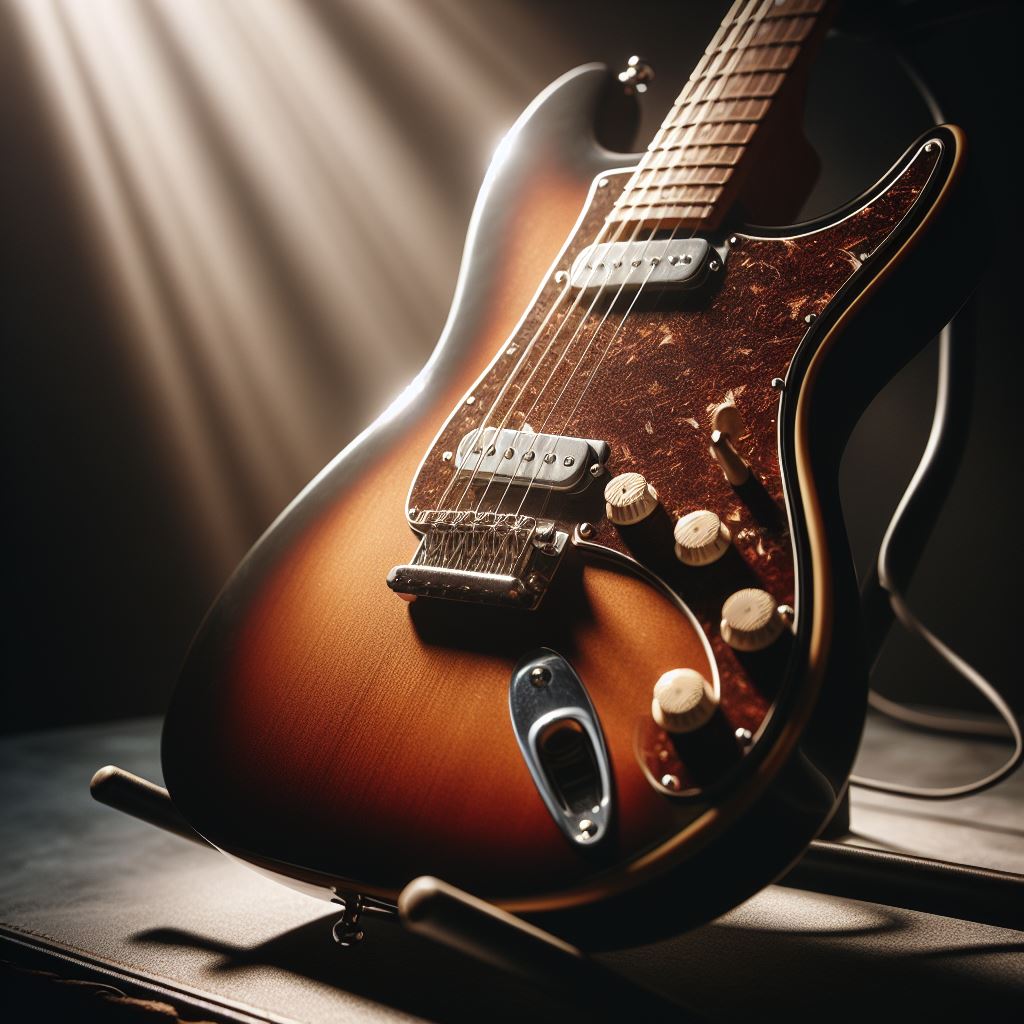Welcome to the world of the acoustic guitar, an instrument beloved by millions for its warm, rich sound and versatility in various music genres. Mastering this instrument requires patience, dedication, and a wealth of knowledge about not just techniques, but also the gear that can enhance your playing experience. Whether you’re a beginner plucking your first chords or a seasoned player looking to refine your skills, our guide is here to provide you with invaluable tips and tricks that will help you on your journey to becoming an accomplished guitarist.
To ensure you never miss out on our latest tutorials and gear reviews, make sure to Subscribe To My YouTube Channel where we share a treasure trove of resources tailored for every skill level.
From understanding the basics of chord progressions and fingerpicking patterns to exploring the nuances of tonewood and string types, this guide will delve into every aspect necessary for you to truly master the acoustic guitar. As you progress through our lessons and reviews, you’ll discover how to make the most of your practice sessions, select the right equipment, and ultimately, express yourself through the timeless language of music.
Essential Techniques for Acoustic Guitar Proficiency

Achieving proficiency on the acoustic guitar involves mastering a set of essential techniques that form the foundation of your playing. One of the first skills to hone is the art of accurate strumming, which brings rhythm and life to chords. Strumming should be fluid and controlled, with the ability to seamlessly switch between different strumming patterns in sync with the music’s tempo.
Another crucial technique is fingerpicking, where the use of individual fingers allows for more intricate and expressive playing. Developing a solid fingerpicking style can open up a world of musical textures and patterns that add depth to your performances. Additionally, understanding how to perform hammer-ons, pull-offs, and slides will enable you to add embellishments that can enhance simple melodies and chord progressions.
Barre chords are also an essential aspect of acoustic guitar playing. Though challenging for beginners, these chords allow you to play in different keys and execute chord transitions smoothly. Lastly, cultivating the ability to mute strings intentionally with both the fretting and strumming hands will give you greater dynamic control and add a percussive element to your playing.
With consistent practice, these techniques will not only improve your overall sound but also prepare you for more advanced playing styles. Remember, it’s not just about playing notes; it’s about conveying emotion and connecting with your audience through the music you create on your acoustic guitar.
Choosing the Right Acoustic Guitar for Your Style

Selecting the appropriate acoustic guitar is a pivotal decision that can significantly influence your musical journey. The body shape of the guitar is one of the first considerations; with options ranging from the intimate parlor guitars to the robust dreadnoughts, each shape offers distinct tonal characteristics. A smaller body may produce a brighter, more focused sound, ideal for fingerstyle players, while a larger body tends to offer a richer, louder tone, suitable for strumming chords.
Wood types used in the guitar’s construction also play a vital role in shaping its sound. Spruce tops are known for their clarity and versatility, whereas cedar tops deliver a warmer tone. The choice of rosewood, mahogany, or maple for the back and sides further customizes the sonic profile, affecting the resonance, sustain, and overall timbre of the instrument.
The neck width and profile should match your hand size and playing style for comfortable playability. A slimmer neck might suit players with smaller hands or those who primarily play lead lines, while a wider neck could be more comfortable for fingerpicking techniques. Additionally, the action, or the height of the strings above the fretboard, is crucial for playability and should be adjustable to accommodate your playing style.
Lastly, consider guitars with built-in electronics if you plan on performing live. Acoustic-electric guitars come equipped with pickups and preamps, allowing for easy amplification without compromising the acoustic tone. When choosing your acoustic guitar, it’s essential to play various models to find the one that feels right, sounds inspiring, and aligns with your musical ambitions.
Advanced Acoustic Guitar Tips for Seasoned Players

For the experienced guitarist looking to refine their expertise, advanced techniques can add depth and expression to your acoustic guitar playing. One such technique is the use of alternate tunings, which can create unique chord voicings and resonances that standard tuning does not allow. Open tunings, in particular, facilitate a whole new range of slide guitar sounds and fingerpicking patterns.
Another method to explore is percussive playing, which integrates taps and slaps on the guitar body to add rhythmic elements to your playing. This can be combined with traditional fingerstyle techniques to create a rich, layered sound that is both melodic and percussive.
Dynamic control is also crucial for the seasoned player. Mastering the ability to smoothly transition between soft and loud playing, known as ‘dynamic range,’ can inject emotion and drama into your music. Experimenting with the angle and attack of your picking or strumming hand can greatly influence your guitar’s volume and tone.
Harmonics are another area where seasoned players can expand their sonic palette. Both natural and artificial harmonics can produce ethereal, bell-like tones that can be used for accents or entire melodies. Combining harmonics with other techniques, such as fingerpicking or chordal playing, can yield captivating results that elevate the musical experience.
Lastly, don’t overlook the importance of developing a solid improvisational skill set. Being able to spontaneously create music not only enhances your versatility as a player but also opens up new avenues for compositional ideas. Regular practice in different keys, scales, and styles will increase your fluency and confidence in improvisation on the acoustic guitar.
Incorporating Fingerstyle into Your Acoustic Repertoire
Embracing fingerstyle is a transformative step in an acoustic guitarist’s journey, offering a new dimension of musical expression. By using your fingertips or fingernails, rather than a pick, you gain greater control over individual strings, allowing for intricate rhythms, harmonies, and melodies to coalesce into a solo performance that sounds like multiple instruments.
To begin incorporating fingerstyle into your repertoire, start with the basics of fingerpicking patterns. Practice these patterns consistently, focusing on the thumb’s role in handling the bass lines while the index, middle, and ring fingers manage the melody and harmony on the higher strings. This will establish a solid foundation for more complex pieces.
Understanding the nuances of touch and tone is also vital. Experiment with the angle and attack of your fingers against the strings to find the sweet spot where the notes ring clear and true. Pay attention to your hand’s position, ensuring it is relaxed and poised to move fluidly across the strings. Mastering these subtleties can significantly enhance the quality of your fingerstyle playing.
As you grow more confident, explore the wide range of fingerstyle genres, from classical and folk to modern percussive styles. Each genre presents unique challenges and techniques, such as Travis picking, a staple in country and folk music, or the tapping and slapping techniques found in contemporary percussive fingerstyle.
Finally, listening to and learning from fingerstyle masters can be incredibly inspiring. Players like Tommy Emmanuel, Chet Atkins, and Andy McKee have pushed the boundaries of what is possible on the acoustic guitar. Studying their compositions and performances can offer valuable insights and motivation to broaden your fingerstyle abilities.
The Role of Gear and Accessories in Acoustic Guitar Mastery

While the skill of the musician is paramount, the role of gear and accessories in achieving acoustic guitar mastery cannot be understated. The right tools can enhance playability, tone, and overall enjoyment of the instrument. For instance, a high-quality set of strings can make a substantial difference in sound clarity and longevity, while the choice of a pick or thumbpick can influence attack and dynamics.
Capos are another essential accessory for acoustic guitarists, allowing for quick key changes and access to new chord voicings without the need to relearn finger positions. Similarly, a reliable guitar tuner ensures that your instrument is pitch-perfect, which is crucial for both practice and performance.
Sound projection and quality can be significantly improved with the addition of an acoustic guitar amplifier or a specialized preamp system, especially for live settings. Moreover, investing in a sturdy guitar stand and a hardshell case will protect your guitar from damage and maintain its condition over time.
Maintaining your acoustic guitar is also vital. Regular cleaning and conditioning of the fretboard, along with humidity control, will keep your guitar playing smoothly and prevent warping or cracking. These maintenance routines, combined with the right gear and accessories, lay the groundwork for a superior playing experience.
For those eager to dive deeper into the world of acoustic guitar gear and accessories, Subscribe To My YouTube Channel at jonathansturgill.com. Here, you’ll find comprehensive reviews, tips on selecting the right equipment, and expert advice to aid you in your quest for acoustic guitar mastery.

